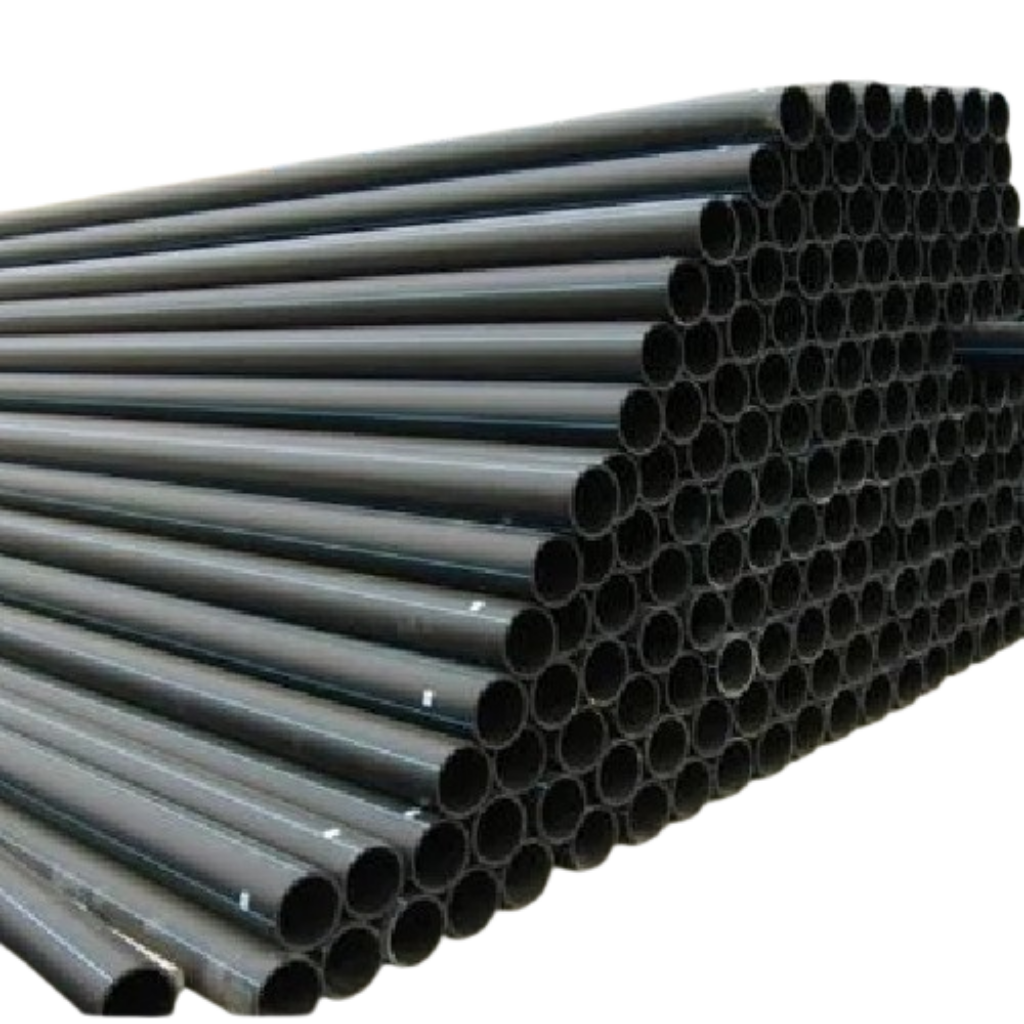75mm HDPE Pipe
The 75mm HDPE pipe is a larger diameter pipe compared to the 63mm, and it shares similar pressure ratings (4 kg/cm², 6 kg/cm², 10 kg/cm², 12.5 kg/cm², 16 kg/cm², 20 kg/cm², 25 kg/cm²). The key difference is the increased diameter, which affects the volume of fluid the pipe can transport and the pressure ratings it can handle at various levels of wall thickness.
Here are the detailed explanations of the 75mm HDPE pipe with various pressure ratings:
HDPE Pipe Material & Features
As with the 63mm pipe, the 75mm HDPE pipe has the following properties:
Durability: HDPE is incredibly durable and resistant to cracking, weathering, and chemical degradation, making it suitable for both indoor and outdoor installations.
Corrosion Resistance: HDPE pipes are not susceptible to corrosion like metal pipes, allowing them to perform well in harsh environments (such as high-humidity areas or those exposed to various chemicals).
Long Lifespan: HDPE pipes can last up to 50 years or more when installed correctly.
Flexibility: HDPE is more flexible than rigid materials, which is beneficial for applications where pipes may need to accommodate ground shifts or irregularities.
Pressure Ratings for 75mm HDPE Pipe
4 kg/cm² (Low Pressure)
- Applications: This pressure rating is suitable for low-pressure systems. Common applications include small irrigation systems, drainage systems, or residential water supply where low to moderate pressure is sufficient.
- Pipe Characteristics: The wall thickness will be relatively thinner than higher-pressure pipes. These pipes are not designed for long-distance water transport at high flow rates.
6 kg/cm² (Moderate-Low Pressure)
- Applications: This is still a relatively low-pressure rating, but it can be used in residential applications, small-scale commercial systems, or light irrigation setups where water pressure is moderate.
- Pipe Characteristics: This pressure rating is appropriate for short-to-medium length piping systems and smaller, more localized networks.
- small rural systems.
Installation Considerations
Joining Methods: Like the 63mm pipe, 75mm HDPE pipes are typically joined using butt fusion or electrofusion methods. These create strong, durable joints that are as strong as the pipe itself.
Pipe Supports: Larger pipes like 75mm will need sufficient support during installation to prevent sagging or buckling. Spacing for supports depends on the pressure rating and the installation conditions (e.g., buried or above ground).
Bending and Flexibility: HDPE pipes have a natural flexibility that allows them to follow the contours of the installation site. For applications requiring slight directional changes, 75mm HDPE pipes can be bent without breaking, which makes them easier to install than rigid pipes.

